Today I woke up with a couple of nerdy ranking lists floating around in my head. I suspect these will get expanded into YouTube videos in the near future, but for now, just the straight lists. These are my personal rankings of all Rush albums, and all Metroid games.
Rush Albums Ranked
It’s probably worth noting here that I got seriously into Rush when I was a freshman in high school, in 1989, so there’s a definite before-and-after feel going here. The stuff that already existed when I got into them seemed mythic and eternal; the stuff after that is all “the new stuff” to me, even though the oldest of “the new stuff” is now 33 years old… but when it came out, the band’s first album was only 16 years old. (As was I.)
- Moving Pictures (1981)
- Signals (1982)
- A Farewell to Kings (1977)
- Permanent Waves (1980)
- Grace Under Pressure (1984)
- Hemispheres (1978)
- Clockwork Angels (2012)
- Counterparts (1993)
- Snakes and Arrows (2007)
- Power Windows (1985)
- Caress of Steel (1975)
- 2112 (1976)
- Vapor Trails (2002)
- Hold Your Fire (1987)
- Fly by Night (1975)
- Rush (1974)
- Feedback (2004)
- Roll the Bones (1991)
- Presto (1990)
- Test for Echo (1996)
I suspect many Rush fans would criticize my low placement of 2112 but I stand by it. I just don’t think it’s that great. I find the side-long suite on Caress of Steel to be more musically and conceptually interesting, and the other tracks on Caress are much more interesting than the utterly forgettable side 2 of 2112. I couldn’t even remember all of the songs. (After really straining my brain muscle I was able to come up with “Tears,” but I had to look at Wikipedia to remember “Lessons.”) I even prefer “I Think I’m Going Bald” to most of the filler tracks on 2112.
The Live Albums
Yeah, Rush had a bunch of live albums too. Earlier on in their career, they had a nice formula of four studio albums, then a live album. After Neil’s life fell apart in the late ’90s with the deaths of his wife and daughter, and the band’s future became more uncertain, they started releasing a live album after every studio album, plus some other archival material, and things got messy. I’m not even sure I’m accounting for all of them here. Anyway, here’s the list:
- A Show of Hands (1989)
- Grace Under Pressure Tour (recorded 1984, released 2009)
- Exit… Stage Left (1981)
- Rush in Rio (2003)
- R40 Live (2015)
- Time Machine 2011: Live in Cleveland (2011)
- Clockwork Angels Tour (2013)
- R30 (2005)
- Snakes and Arrows Live (2008)
- All the World’s a Stage (1976)
- Different Stages (1998)
I have to give special recognition to Grace Under Pressure Tour, because when the DVD of that was finally released in 2009, and I watched it, my jaw dropped. I suddenly remembered that I had seen it on TV in 1985 and was mesmerized by it, but that was the only time TV or radio ever exposed me to Rush growing up. By the time I was in high school, I had all but forgotten it. (Which is to say, when a friend first played me a tape of A Show of Hands, I knew I had heard of Rush, but didn’t remember having ever heard them.)
Metroid Games Ranked
I’m almost as much of a Metroid nerd as I am a Rush nerd. As with Rush, my first taste of Metroid was pretty far removed from my obsession with it. The same friend who introduced me to Rush in high school also owned an NES (I didn’t), and I played Metroid a few times at his house. I was intrigued by this disturbing and immense underground world, but it was also disorienting and brutally difficult.
For various reasons I never owned or even played an SNES (Super Metroid was released when I was a junior in college), and I totally skipped the N64/PlayStation generation of consoles too, because… my god, those polygons and textures just plain sucked, and the games all looked like absolute ass. The GameCube drew me back in though — the first actual console I owned since my Atari 2600 (not counting an Atari 7800 I bought NOS from Radio Shack’s mail order catalog in the late ’90s) — and I was obsessed with Metroid Prime, the first Metroid game I truly experienced.
A year or two later I bought a Game Boy Advance SP, and played Zero Mission and Fusion, then of course Metroid Prime 2: Echoes, also on the GameCube. I loved all of those. The DS Metroid games were kind of crap though, and I could never get the hang of the Wii motion controls on Metroid Prime 3: Corruption. Fortunately, the Wii also introduced the Virtual Console, and I finally got to experience the magic of Super Metroid. (That was also how I introduced my then 5-year-old son to the world of Metroid.)
After that, the Metroid franchise all but died out, because Nintendo seemed to actively try to kill it with misguided garbage like Other M and Federation Force.
And then came Samus Returns, on the 3DS. Ohhhhh man. That game scratched the itch. Needless to say, Metroid Dread carried on where that one left off, and I am eagerly awaiting Metroid Prime 4.
And now, the list:
- Metroid Dread (Switch)
- Super Metroid (SNES)
- Metroid Prime (GC)
- Metroid: Samus Returns (3DS)
- Metroid Prime 2: Echoes (GC)
- Metroid: Zero Mission (GBA)
- Metroid Fusion (GBA)
- Metroid Prime 3: Corruption (Wii)
- Metroid Prime Pinball (DS)
- Metroid II: Return of Samus (GB)
- Metroid Prime: Hunters (DS)
- Metroid: Other M (Wii)
- Classic NES Series: Metroid (GBA)
- Metroid (NES)
- Metroid Prime: Federation Force (3DS)
Finally… just in case you didn’t get the reference in this post’s title:

